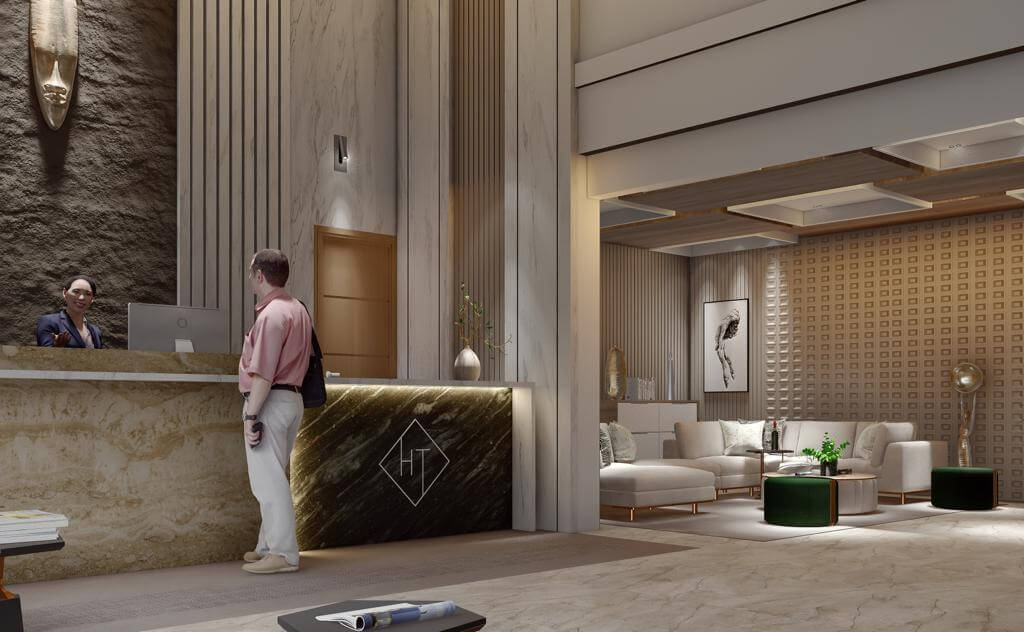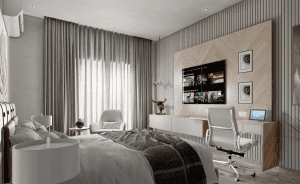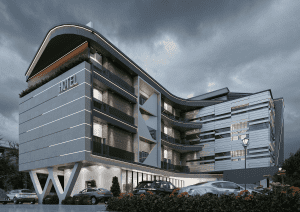Lighting is one of the most important aspects of your interior because, as well as illuminating a room, it can completely transform the look of a space for better or for worse.
In today’s blog, we’ll explore a variety of different lighting types and provide expert ideas on how to style the lighting in your home interior.
Welcome.
Lighting is crucial to interior decoration since it can both make and mar your room aesthetics. Lighting types and intensity should be duly taken into consideration since it can contribute to irritation, tired eyes and lighting fatigue. While picking the right lighting for your space, one should remember that:
- Lighting always works in conjunction. The effectiveness of lighting depends on other interior design factors like colour palettes, room size and layout, headspace availability, fabric choices, and furniture
- The illusion is an integral part of all design. Space illusion in interior design is defined byre flected light, in simpler terms, lights used for interior decoration creates an illusion of vastness by reflecting on surfaces and further illuminating the concerned room and its
Types of Lighting
First, there are two main types of lighting which everyone could do with knowing a little more about—natural light and artificial light.
- Natural light
Sunlight is the most natural light source there is. It’s mentally stimulating and absolutely free. But it’s also difficult to control. Window coverings are helpful in controlling natural light.
Daylight is a crucial factor in interior design. Interior designers and lighting designers will monitor how daylight enters each space they work on – it will affect where everything is positioned.
- Artificial light
Artificial lighting should be used to add layers to your space. A warm light (opposed to a clear light) is the most welcoming option for residential spaces. As well as adding to the overall interior design style of a space, artificial lighting can be used to highlight features, create zones and alter the perceived proportions of a room. Artificial light creates visual stimulation – we’re always drawn to the brightest point in a room, so we use artificial light to accentuate specific features in the space.
Types of Interior Light
The five main types of interior lighting are: general, ambient, mood, task and accent.
Some lights can fit into a few types (depending on their placement, brightness and use) but a general understanding of each individual type of lighting can be very helpful in planning an effective scheme.
1. General Lighting
General lighting is the basic foundation of a lighting scheme, providing a uniform glow over an entire room and illuminating a space functionally rather than for aesthetic reasons.
The defining characteristic of general lighting is that it’s usually direct and should be controlled by a dimmer switch to account for changes in daylight.
A central pendant light is perhaps the most commonly used source of general lighting and can be an important part of the design of the room. A luxury chandelier or an artistic installation both make great visual statements in a room and direct the eye.
2. Ambient Lighting
The next layer of lighting is ambient lighting which is a great partner to general lighting. Both types share important characteristics—they’re primarily functional and used to light a complete area. The main difference between the two is in the direction of their light. The difference is, “General lighting is just that—practical light for every day and night use. Ambience lighting will more times out of none be connected to a dimming system to control the light levels depending on the occasion. Ambience lighting is generally used for entertaining—it creates drama.”
3. Task Lighting
As its name would suggest task lighting is any light source used for a particular task like reading or cooking. By nature, these lights need to have a stronger wattage than most other lighting. Always
combine with adequate ambient light, however, to avoid eye strain caused by the sharp contrast from light to dark areas.
Reading and working areas are some of the most obvious areas in need of task lighting. Balanced- arm lamps make great desk designs whilst flexible reading lights fixed near a headboard are great for bedtime reading. Mirror lighting works well in personal grooming areas and bathrooms.
Always bear in mind the five lighting categories (below) when planning your lighting scheme. Think about where you you need what, how you plan to use your space and use a range of lighting effects to create the desired look.
4. Mood Lighting
Mood lighting is as important to the overall look of a room than general and ambient lighting and a space would be bare without it. It makes a room pleasantly inviting by creating pools of light which counteract the shadows caused by general lighting.
It’s also an important element of a room’s style as it tends to be equally concerned with style as it is with function. Because mood lighting is often the layer of lighting closest to eye level, it’s important to shade any glare from unsightly bare bulbs with a filter. The same goes for your general or ambient lighting if the bare bulb can be seen from below.
5. Accent Lighting
Similar to task lighting, accent lighting has a particular function and is any lighting which has specifically been included to highlight a particular feature in a room.
Spotlights which highlight artwork, sculptures and objects in cabinets or on pedestals are examples of accent lighting which enhance the pieces and prevent them from being lost in an under- illuminated space.
Sometimes architectural lighting can be included in accent lighting as well as ambient lighting. Accent architectural lighting tends to be a little more subtle, however, highlighting textures and defining perimeters instead of a specific object.
Lighting Effects Down lighting
Down lighting is a very useful and most popular form of lighting in interiors—most central light sources or spotlights will be down lights. It does cast unflattering shadows (especially for people) so it needs to be counterbalanced with adequate ambient lighting.
Uplighting
Uplighting is a much softer alternative to downlighting as it indirectly introduces light into a room by having it bounce off the ceiling and reflect back into the room.
Wall Washing
Wall washing evenly illuminates a vertical surface in a soft way. Place the light at an adequate distance so that the beam reaches the entire surface.
Wall Grazing
Wall grazing places a light intentionally close to the surface it’s to illuminate, effectively highlighting its texture.
Spotlighting
Spotlighting is used a lot in task and accent lighting to highlight a particular feature of a room.
Perimeter Lighting
Perimeter lighting accentuates the dimensions of a room and expands its apparent size. Coving or cornice lighting is an effective way to do this and is used often by interior designers and architects.
Cost of interior lighting
When considering traditional lighting technologies and installation mechanisms, the cost depends primarily on the following:
- Lightingenergy
- HVACenergy
- Labourto maintain
- Replacementmaterials
- Recycling
As much as 85% of the entire cost of lighting up your home is attributed to either lighting or HVAC energy. And thus, inefficiency when it comes to energy consumption should be duly acknowledged. Further, inefficient energy consumption leads to labour charges, since more the number of bulbs
burning out, more the cost of labour charges required to replace the burned-out bulbs. Burning-out of bulbs invariably results in the cost of replacement. Conventional lighting appliances might be cheaper as compared to latest light designs, but since they burn-out far more frequently, you actually end up spending more in the long run. The key to saving money, therefore, is to invest in energy-efficient lighting like LED and conserve energy as much as possible.
Smart Lighting: The Internet of Things (AIoT) and WiFi/Bluetooth controlled lights
Smart lighting refers to a specific set of lighting technology that is specially designed to increase efficiency and conserve energy. It utilises Artificial Intelligence (AI) and the Internet of Things (IoT) to autoregulate aspects like intensity and colour with respect to its immediate surroundings.
When combined, AI and IoT result in the AIoT- the artificial intelligence of things. Metaphorically speaking, the internet of things can be referred to as the digital nervous system while artificial intelligence is the brain. Smart lighting is an example of AIoT, which in its advanced form can be regulated remotely via Bluetooth or WiFi.
Basics of Lighting Do’s of Lighting
- Do keep in mind the functionality aspect of each room. Lighting needs to be chosen withrespect to what the room is being used for and also the type of furniture since certain furniture pieces will require specific
- Do account for a light intensity regulator, or dimmer system, since it allows the light to bemood
- Do maintain uniformity in terms of colour and intensity scroll all rooms. Harsh changes canresult in irritation, stress, and eye
- Do install lights on shorter walls, since they draw away attention from longer walls, makingthe area concerned look symmetrical.
- Do remember that a 60- or 70-watt bulb can be too bright for mood lighting. Sticking to a 40-watt bulb is ideal.
- Doincorporate diffusers to blur out harsh lights, in order to maintain a soothing
Don’t of Lighting
- Do not Stick to one central light source because it causes unflattering shadows – a layeredscheme is essential.
- Donot limit yourself to a single source of light in any given space, since it causes awkward Layering is key since it adds depth and dimension to any room.
- Do not ignore concealed wiring An ugly display of bare wires can take away positive attention from the aesthetic appeal.



